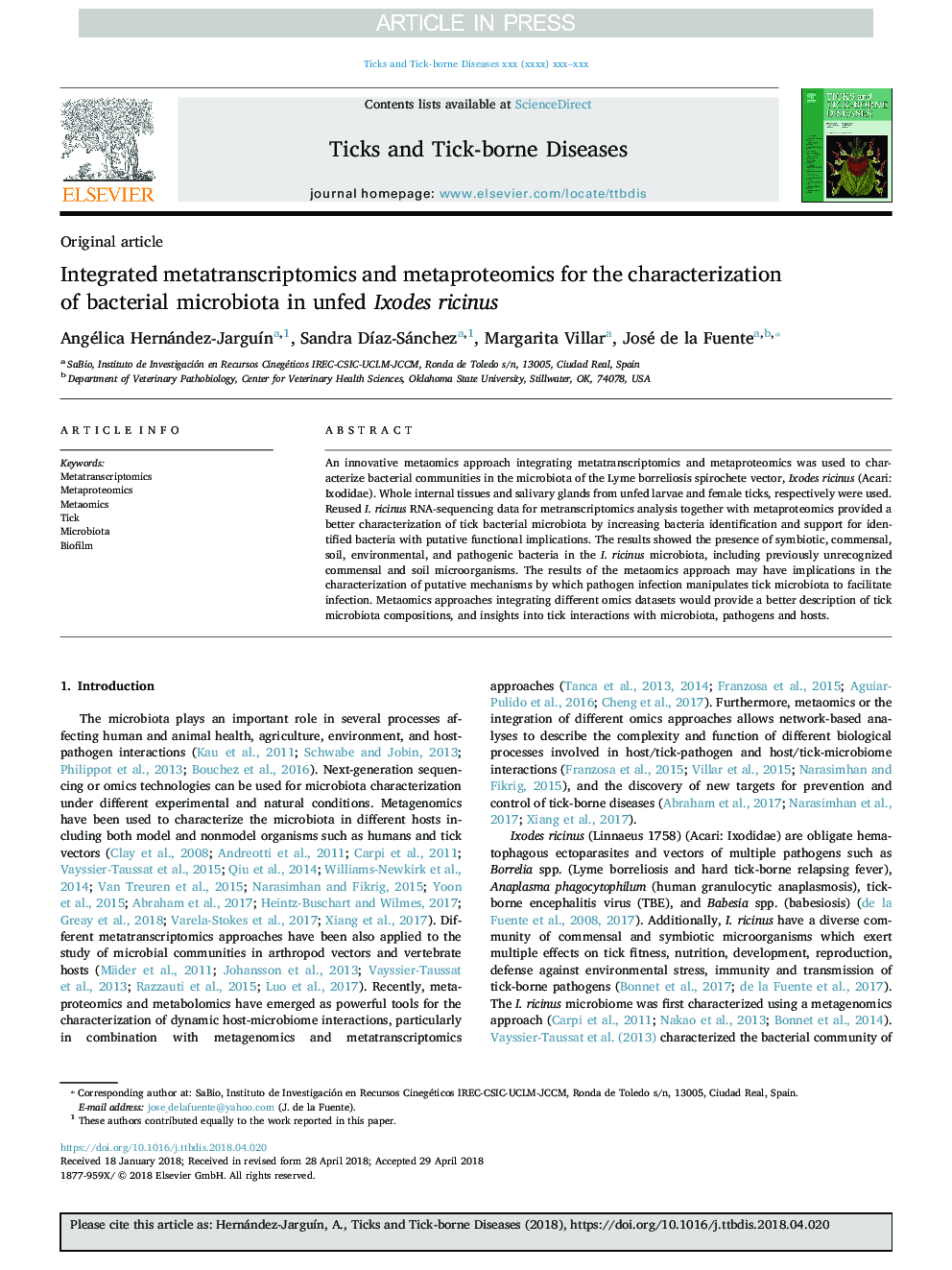| Article ID | Journal | Published Year | Pages | File Type |
|---|---|---|---|---|
| 8507065 | Ticks and Tick-borne Diseases | 2018 | 11 Pages |
Abstract
An innovative metaomics approach integrating metatranscriptomics and metaproteomics was used to characterize bacterial communities in the microbiota of the Lyme borreliosis spirochete vector, Ixodes ricinus (Acari: Ixodidae). Whole internal tissues and salivary glands from unfed larvae and female ticks, respectively were used. Reused I. ricinus RNA-sequencing data for metranscriptomics analysis together with metaproteomics provided a better characterization of tick bacterial microbiota by increasing bacteria identification and support for identified bacteria with putative functional implications. The results showed the presence of symbiotic, commensal, soil, environmental, and pathogenic bacteria in the I. ricinus microbiota, including previously unrecognized commensal and soil microorganisms. The results of the metaomics approach may have implications in the characterization of putative mechanisms by which pathogen infection manipulates tick microbiota to facilitate infection. Metaomics approaches integrating different omics datasets would provide a better description of tick microbiota compositions, and insights into tick interactions with microbiota, pathogens and hosts.
Related Topics
Life Sciences
Agricultural and Biological Sciences
Animal Science and Zoology
Authors
Angélica Hernández-JarguÃn, Sandra DÃaz-Sánchez, Margarita Villar, José de la Fuente,
